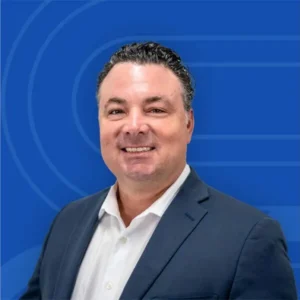Editor’s Note: This piece originally appeared in MortgagePoint magazine.
If you ask mortgage leaders about industry growth areas for 2025, they are likely to mention at least two: home equity products (HELOCs and HELOANS) and non-QM. Home equity lending is surging. According to the June 2025 ICE Mortgage Monitor, second-lien equity withdrawals recently reached almost $25 billion, “the largest first quarter volume in 17 years.” Non-QM lending, too, is on a roll. Not only was this the fastest-growing mortgage segment last year, but in 2025, non-QM sales volume should reach $100 billion.
For mortgage executives and loan officers looking to capitalize on every pocket of opportunity, the growth of these individual segments and the synergies between them is noteworthy. Just like with first liens, some borrowers cannot qualify for an agency home equity product. For example, there are 15 million self-employed individuals in the United States, many of whom would benefit from an alternative non-QM home equity loan. So would many of the real estate investors who encompass about 30% of single-family home purchases today.
It’s the combination of the two segments, however, that is attracting attention. The non-QM industry has
built an infrastructure based on flexibility and personalization. Not only has it expanded its home equity and HELOC offerings, but it’s also done so in creative ways to help loan officers tailor their solutions for the borrowers who require them. Wholesalers have also stepped up their training to help mortgage brokers and loan officers achieve mastery of this product line.
The Trends Driving Home Equity Demand
There are many reasons that non-QM borrowers and agency borrowers are currently gravitating toward second liens and HELOCs.
The desire to make home improvements is one major catalyst. The average U.S. home is 40 to 50 years old, and many properties could use repairs or updates. Home equity loans and HELOCs are a vital source of funding for these projects.
Real estate portfolio expansion is another driver. During the last mortgage boom, when origination volume reached $4 trillion and interest rates were ultra-low, a wave of business-purpose borrowers opted for cash-out refinancing of their income properties. This involved refinancing an existing mortgage and simultaneously cashing out some of the equity to buy more properties or finish renovations. If these same investors were to complete a cash-out refi now, they would forfeit the attractive interest rates they previously locked in. Taking out a smaller, closed-end second mortgage or HELOC enables them to convert equity into cash without sacrificing these rates on their original mortgages.
Then there is the ability to pay down other debt, such as the nearly $1.2 trillion Americans owe on their credit cards. A home equity loan or HELOC can help some borrowers eliminate or reduce that debt.
Empowering Borrowers to Access Non-QM Alternatives
These trends and more underlie the demand for home equity loans or HELOCs among potential non-QM loan candidates. The opportunities are vast enough for enterprising loan officers to build trusted relationships with these borrowers before their competitors do.
Consider the self-employed borrowers mentioned above. Often, when they apply for an agency mortgage, their tax strategies underrepresent their earnings. This prevents them either from qualifying altogether or from borrowing as much as they want and can repay. As with primary mortgages, non-QM lenders use alternative formulas to calculate these individuals’ incomes. For instance they review 12-24 months of bank statements, one-year’s profit and loss statements, and borrowers’ 1099s. This methodology provides a full picture of their ability to handle the home equity loan or HELOC they desire.
Also, consider the more than 17 million real estate investors who manage approximately 49.5 million housing units (U.S. Census). Many of these investors could also be potential second-lien candidates. In competitive markets, they could have time-sensitive funding needs, from portfolio expansion to renovating in time for “back to college” rental season. Non-QM home equity products have evolved to accommodate their sense of urgency. For instance, lenders can qualify many investors based on a DSCR (debt service coverage ratio) formula that keeps the approval process streamlined.
Matching the Right Non-QM Home Equity Products With the Right Borrowers
These non-QM solutions are not “one size fits all.” It’s not uncommon for a non-QM closed-end second mortgage, for instance, to provide as much as $750,000 in cash—well beyond the smaller amounts loan officers might think about to help borrowers finance a new kitchen in a modest home. They also apply to a wide range of properties—such as single-family residences, townhomes, two- to four-unit rentals, and non-warrantable condos. That increases the number of situations that could make them a helpful option for borrowers.
Non-QM candidates’ goals are wide in range. For example, a self-employed borrower who has begun to invest in income properties might want to scoop up a second rental before her competition does. A closed-end second lien would give her cash for the down payment, and she might qualify based on either her bank statements or her DSCR income. In a tight market, the DSCR option might be preferable for a quick closing.
Another self-employed individual might have business growth on her mind and might benefit from the cash to pay rent on an outside office. A third entrepreneur might be putting twins through college and could anticipate a shortfall he could make up for using private student loans and some second-lien funds.
The Power of Product Mastery
Wholesale non-QM lenders focus on helping the mortgage brokers and loan officers who represent their products to master all the nuances. That empowers them to network with confidence—educating their referral partners and an expanded base of potential non-QM home equity candidates.
It’s all a matter of telling underserved borrowers, “I see you,” and then becoming their go-to non-QM home equity/HELOC expert.








